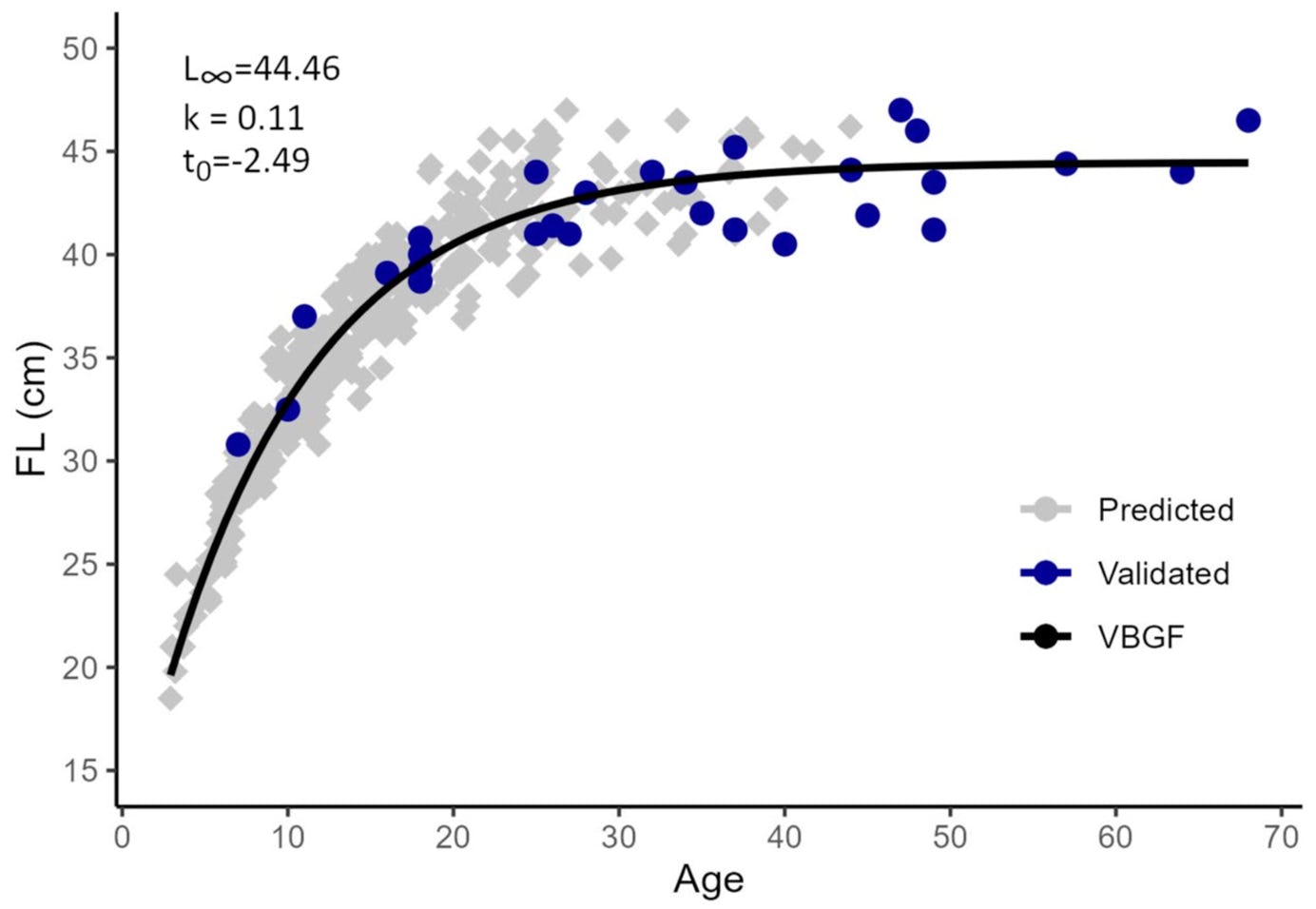Bomb Radiocarbon - Cardinal Snapper

Validated Otolith Mass-to-Age Prediction
Published 2025 - Environmental Biology of Fishes
Validation and otolith‐mass prediction of age and growth for cardinal snapper Pristipomoides macrophthalmus
of the Caribbean Sea
Cardinal snapper Pristipomoides mac- rophthalmus is a commercially important, but com- monly misidentified, deepwater species in artisanal and semi-industrial fisheries throughout the Carib- bean Sea. As with many tropical deepwater fishes, lit- tle is known about the biology or ecology of the spe- cies. Bomb radiocarbon (14C) dating was applied to cardinal snapper sagittal otoliths collected from the waters of Belize and Honduras during 2015–2019 to investigate the lifespan of the species from thin-sec- tioned otoliths with an evaluation of otolith mass as a proxy for age. Ages estimated from 28 thin-sectioned otoliths ranged from 7 to 68 years for fish that covered the range lengths and otolith masses available. Radio- carbon values were measured for each cardinal snap- per otolith core, and two fish (one each from Belize and Honduras) had 14C signatures consistent with pre-bomb values, effectively validating a lifespan of at least 60 years. A curvilinear relationship between otolith mass and estimated age was robust (r2 = 0.95) and is likely to produce age estimates with similar margins of error to traditional, more labor-intensive methods, such as counting increments from thin-sec- tioned otoliths. The otolith mass-to-age relationship is a well-supported method that provides a simple, low- cost approach that can be used by fishers, managers, and other stakeholders to assess the age composition of the cardinal snapper stock in the western Carib- bean Sea for present and long-term monitoring.

Thick-cut cardinal snapper otolith with the core extracted using the micromill for.14C analysis with AMS. The extraction was in the form of powder that was collected from the surface of the slide (inset image left) after removal with a 0.5-mm carbide cutting bur (Brasseler, USA). Scale can be observed from the core extraction path of 2.5 mm (end-to- end) in the nuclear region of the cored otolith section. Note the clearly specific removal of otolith core material from the original section (inset image lower right).

All known coral and otolith 14C records for the Gulf of Mexico and Caribbean Sea with Loess curve (2 parameter, 0.3 spline interpolation; Andrews et al. 2013; Shervette et al. 2021). The hatch years for cardinal snapper were calculated from the consensus ages for the measured 14C values from otolith cores, which were determined in concert with Rosetta Stone reference otolith sections and the alignment to the regional reference chronologies. Included are fits to coral records from Glover’s Reef off Belize (Druffel 1980) and from reefs off Venezuela (Wagner 2009) to illustrate minor differences that are associated with the oceanography of the Caribbean Sea.

Fork length (FL) at predicted age for all sampled cardinal snapper as determined from mean otolith mass (grey diamonds) and 28 cardinal snapper that were validated with bomb 14C dating (blue circles), with a fitted von Bertalanffy Growth Function (VBGF) for the combined dataset (L∞ = 44.5 cm FL, k=0.11, t0= −2.5).